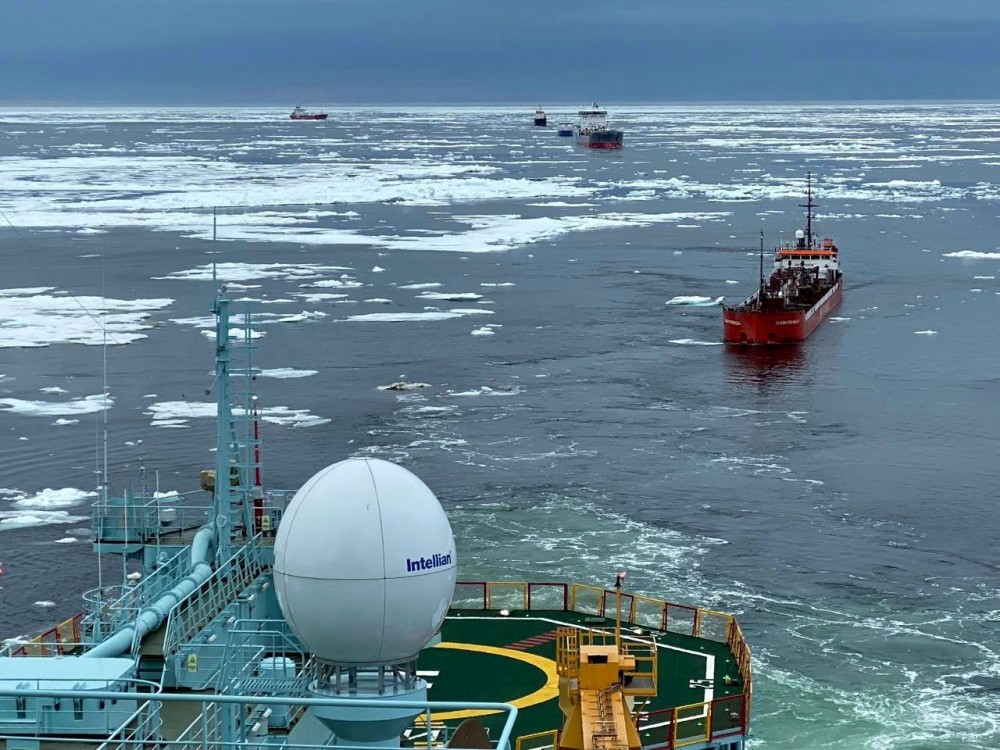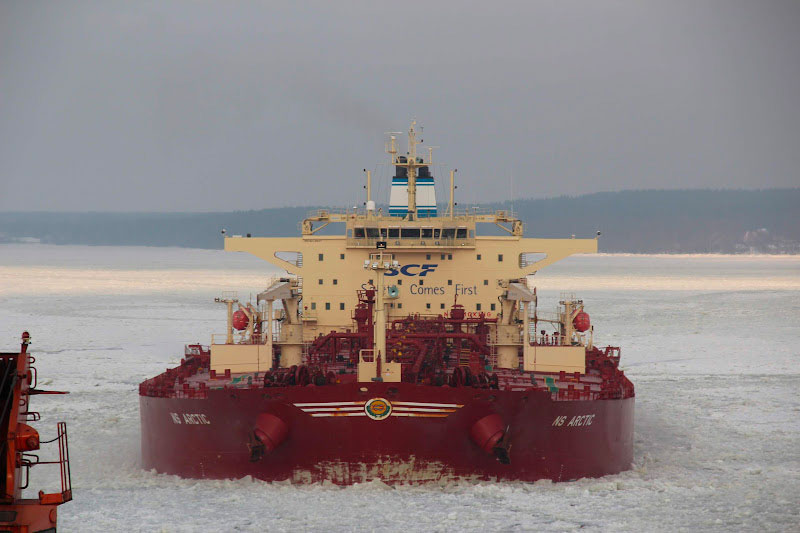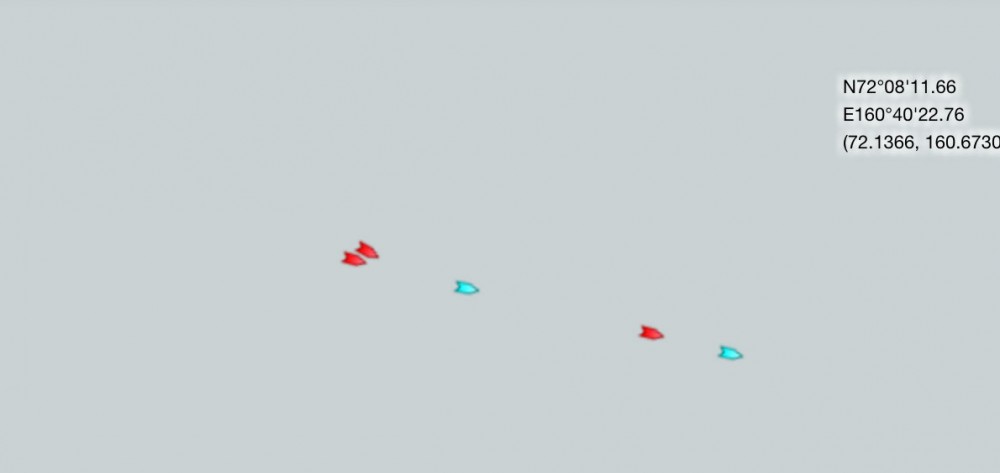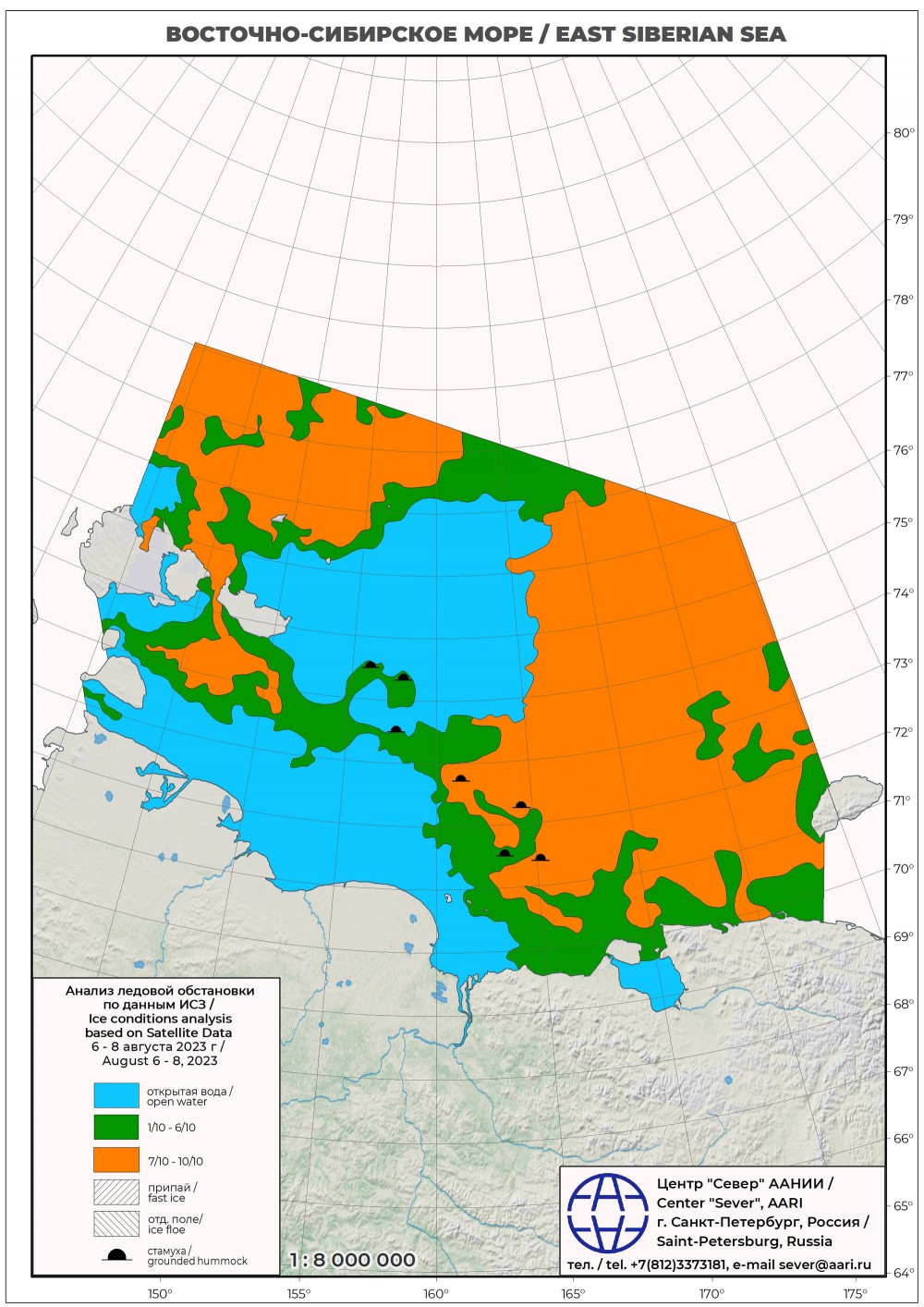A month after they set out on Arctic voyage, two Russian oil tankers still battle with sea-ice
The ships that are loaded with more than 200,000 tons of oil might have been surprised by ice pack in the East Siberian Sea.

The Primorsky Prospect and NS Arctic on the 12th and 14th of July respectively set out from St.Petersburg with course for the Chinese ports of Dalian and Rizhao. They were to arrive at destinations by the middle of August.
That schedule is now significantly postponed. Shipping data show that the ships will make it to the Chinese ports no earlier than 26th of August.
Although the tankers both have ice classification Arc3, their voyage across the Laptev Sea and East Siberian Sea have been marred with troubles with the sea-ice.
For several days, the tankers were at standstill off the New Siberian Islands, and later also in the southern part of the East Siberian Sea.
On board the two ships is more than 200,000 tons of crude oil.
Growing parts of the East Siberian Sea is ice-free. But changes can quickly occur in this region and a sudden emergence of ice pack might have taken the ships by surprise.
“Perhaps the wind has pushed the ice pack towards the coast, increasing the concentration locally so that there’s no longer continuous green strip along the coast?” an anonymous industry expert says to the Barents Observer.
According to the expert, there appears to be no imminent risk for a dangerous situation.
“It doesn’t look like there’s any kind of Arctic horror ongoing,” he explains.
As of the 11th of August, the tankers were again on the move, now as part of a convoy escorted by nuclear icebreaker Taymyr.
Nevertheless, the long and icy voyage of the two oil tankers raises new questions about the actual benefits of sailing on the Northern Sea Route, as well as security in the area.
Both the NS Arctic and Primorsky Prospect have ice classification Arc3, but neither of them have permission to sail independently through the most complex parts of the Northern Sea Route in anything but light ice conditions.
A sailing permission granted in late June this year by Russia’s Northern Sea Route Administration reads that the ships can sail independently only in ice-free waters, as well as light ice conditions.
But in medium ice conditions, the ships are obliged to hire icebreaker escort. It is not clear to what extent the tankers have made it into medium ice conditions. But ice maps from the Russian Arctic and Antarctic Research Institute show that major parts of the East Siberian Sea have a white sheet.
According to the industry expert, ships with low ice class like the NS Arctic and Primorsky Prospect, are likely to experience waiting periods during their voyages across the Arctic route.
“Even with icebreaker escort, there are operational restrictions that can mean long waiting periods. While lower ice class may not be a safety issue, it can be a schedule issue because they don’t get a sailing permit and the icebreaker just tells them to wait.”
“…And that can become a problem at the end of the navigation season as we saw few years ago,” he says.
Located in Kirkenes, Norway, just a few kilometres from the borders to Russia and Finland, the Barents Observer is dedicated to cross-border journalism in Scandinavia, Russia and the wider Arctic.
As a non-profit stock company that is fully owned by its reporters, its editorial decisions are free of regional, national or private-sector influence. It has been a partner to ABJ and its predecessors since 2016.
You can read the original here.


